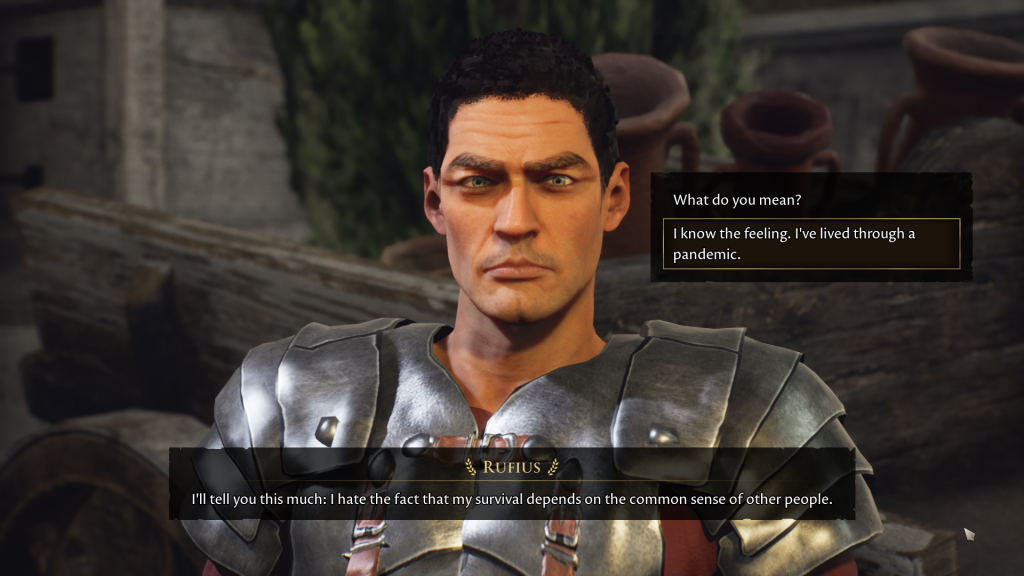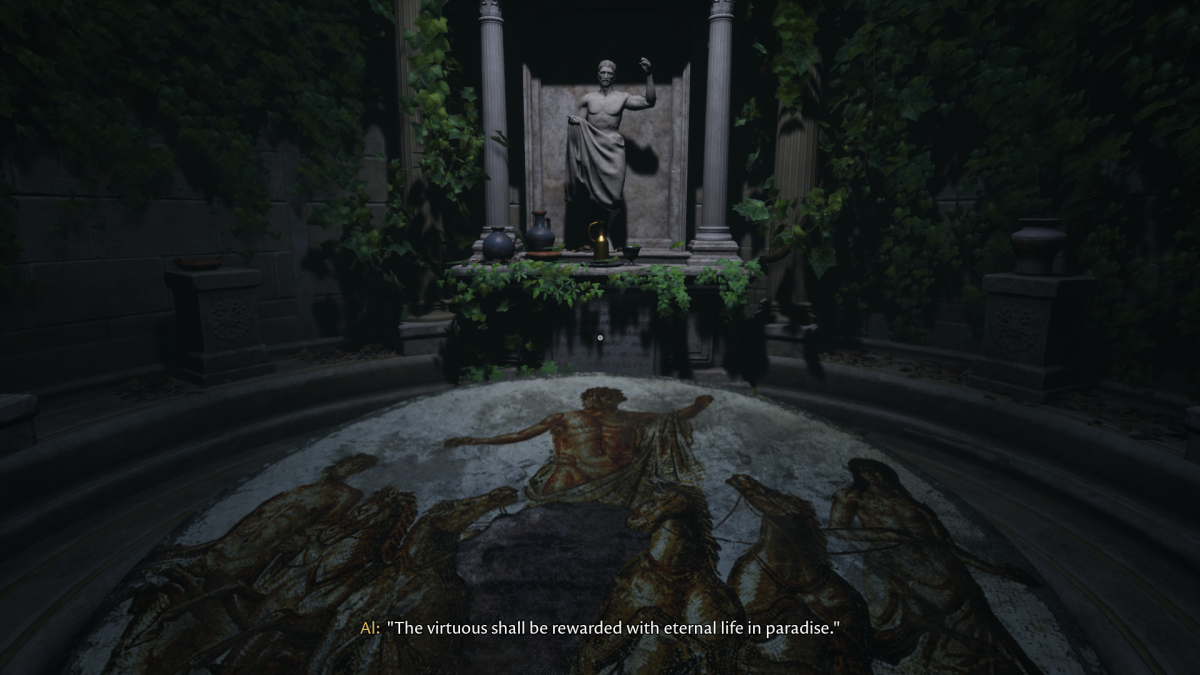Looking for the Quick Review?
I have a tendency to shy away from reviews that assure me I just have to trust the reviewer and play the game without any additional intel. I think it’s reflexive — I don’t even know that I’ve ever been led astray by one — but I find them discomforting. It seems like an easy cop-out, to claim that enjoyment of a game is so dependent on spoiler avoidance that a reviewer can’t really get into the meat of it without ruining everything. It also kinda goes against my reviewing philosophy; I don’t expect you to just trust me, I want to put forth a case both for the game and for myself, because there are valid reasons to dislike any game.
I think you can see where I’m going with this; I’m neck deep in hypocrisy. The Forgotten City is the sort of game that, in my opinion, has earned that “bro play it just trust me” sticker. It’s a veritable narrative experience that deserves to be enjoyed with as fresh a set of eyes as possible.
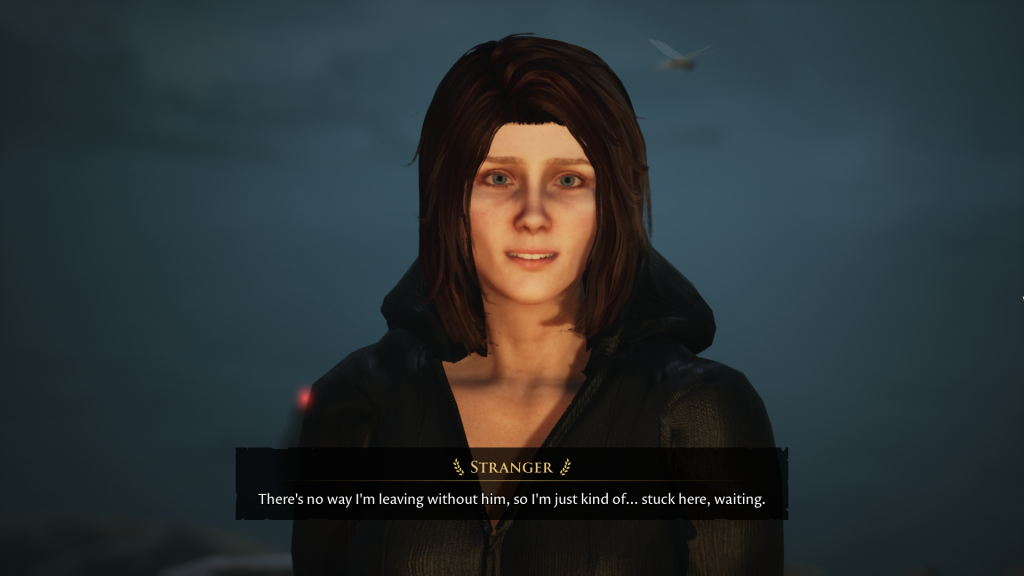
That said, I still can’t blame you for not enthusiastically chasing a several hours-long game on the merits of the “just trust me bro” argument, and, fortunately, I don’t think the game loses too much flavor from brief acquaintance-making.
In The Forgotten City, we wake up, appropriately confused, on the banks of the Tiber river in central Italy. A woman addresses us and asks that we help a man who entered a set of ruins just up the hill and has not yet returned. In search of this stranger, we follow his path into the ruins and stumble through an ornate trapdoor, plunging down a long vertical drop and landing in what appears to be an active settlement far beneath the surface. The people, who dress like and present themselves as Romans living in the first century, seem happy enough, but we soon learn that their lives are contingent on the society’s attachment to and obedience of the golden rule, a Draconian law that states that any instance of sin in the city will result in all of its people turning to solid gold. As one of the citizens you meet points out, it’s something of a grand, highest-stakes interpretation of decimation, the Roman military practice by which one-tenth of the soldiers in a legion would be punished for the crimes or failures of the whole. The Romans saw fit to punish anyone for the actions of some. The Golden Rule punishes everyone for the actions of one.
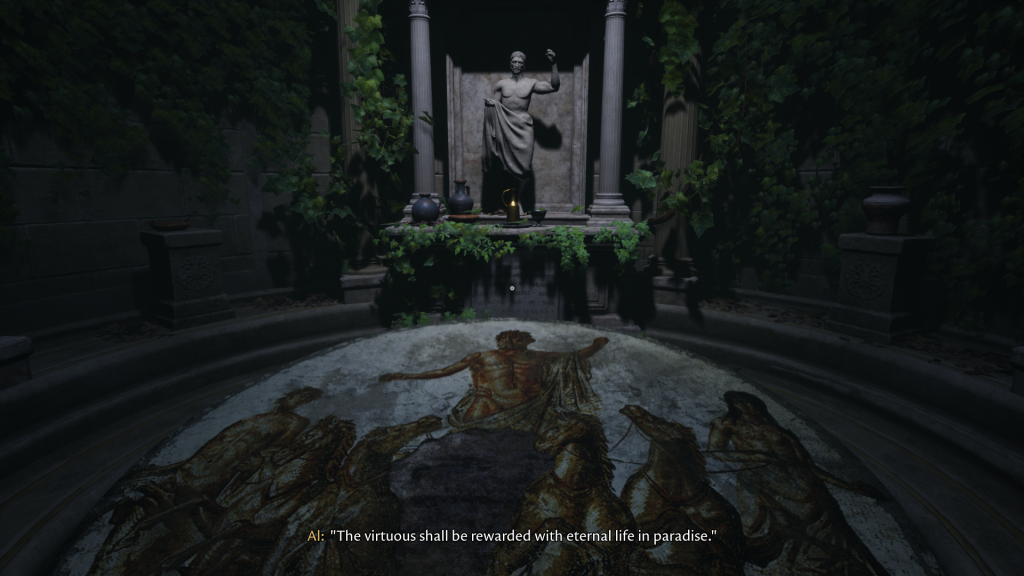
We meet the town’s leader, an aged centurion facing an election he seems unlikely to win. He tells us that he has advance knowledge that someone, somewhere in the city, is about to sin, destroying the entire order of the settlement and the lives of those within. He tasks us with roaming the forgotten city, meeting its people, and identifying the sinner before the sin occurs. Should we fail our mission, should the sinner commit their foul act and bring everything tumbling down, our new associate has a contingency plan, a way to start from scratch with the knowledge we gleaned. That’s where the game gets really interesting. It’s also where I leave you.
The mystery of The Forgotten City is rich and detailed and worth the time I spent figuring it out. The characters are interesting, their stories authentic and expertly woven together to create the maze through which we wander, trying to save this city from itself.
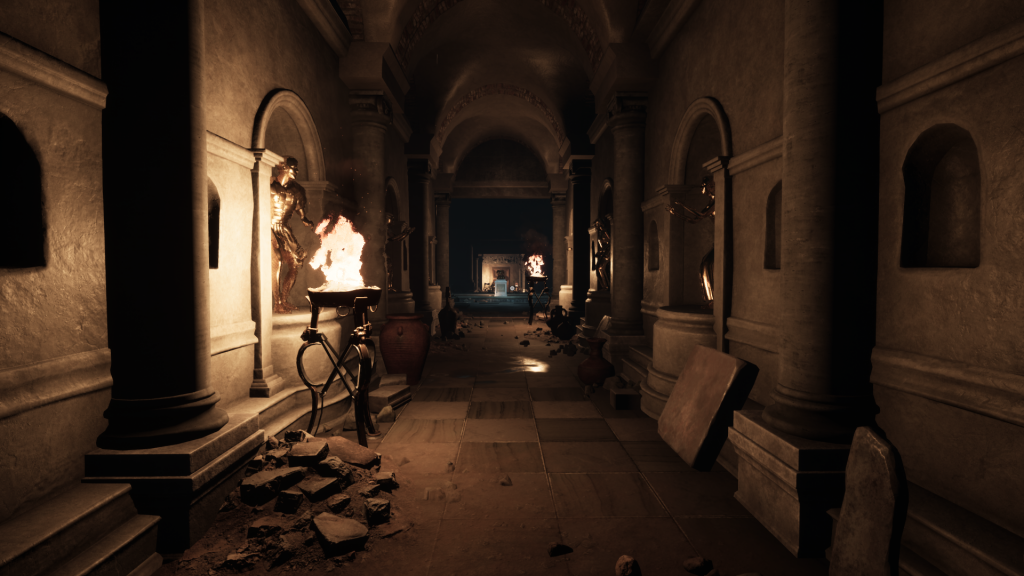
Designed poorly, the central quirk of the game could have easily been exhausting. Fortunately, the developers were clever in easing repetition in what is an inherently repetitive narrative. Each step forward in The Forgotten City feels like a concrete learning experience. Each mistake sets in motion the unraveling of a plan for the next attempt. This was a game I wouldn’t have dared think to stop playing before I reached the ending. The mystery needed to be solved, the city had to be saved.
From here on out, though, you can’t be. (From spoilers). Close this review now and enjoy the game, proceed to the quick review below, or ruin your experience in the name of petty disobedience. Your call.
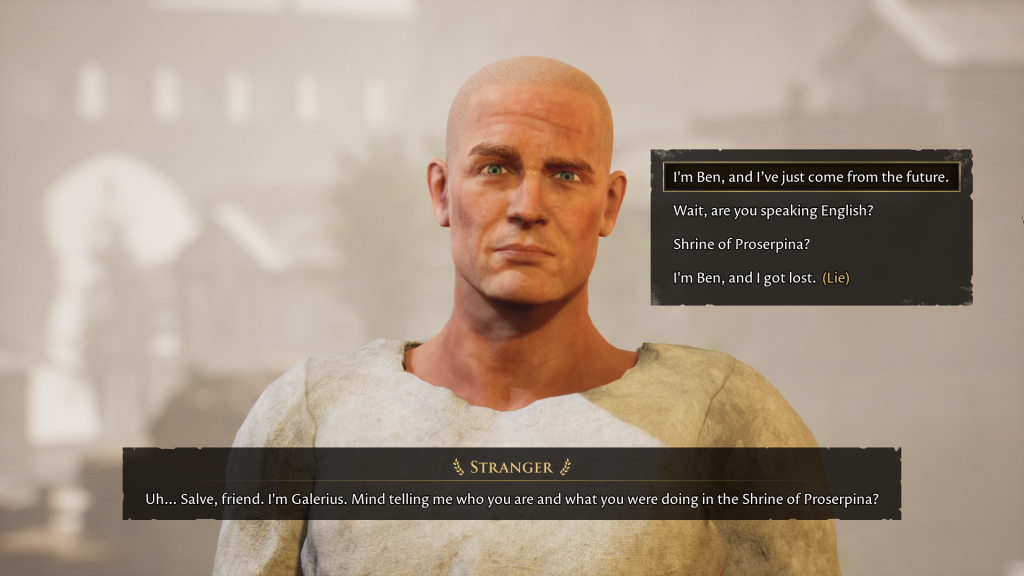
Here be spoilers!
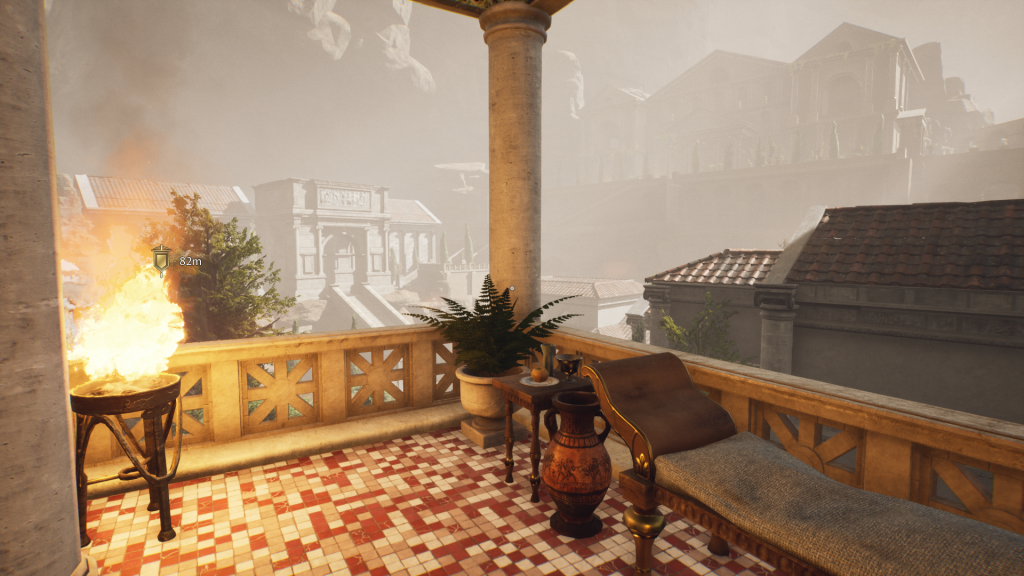
Is it just us now? You’ve beaten the game too, right? Which ending did you get first? Is it bragging to say I nailed the canon ending? Probably not, especially if I let you know how many deaths it took me to get there.
I enjoyed the story of The Forgotten City. I didn’t anticipate its twists or its ending. Altogether, the game reads as a big love letter to fans of historical mythology. That said, the real achievement of this game is how that story was delivered. Time travel is such a tempting narrative device and it’s unfortunate that it’s so easy to fuck up. When I wrote that bit about “easing repetition” a few paragraphs up, I was talking of course about Galerius, the gofer/hero of the story. At face level he’s a simple character, an agent for the maintenance of the player’s machinations through recurrent leaps in time, but his inclusion is key in maintaining a feeling of progress across separate timelines. He prevents the development of that sort of fatigue endemic to platforming games, where difficult segments stretch so long that the player inevitably spends so much energy thinking about one jump or hazard that they forget about the one directly in front of them. I think I would have tired of The Forgotten City pretty quickly if I had been required to sit through each dialog tree and each sequence of events over and over in the name of progress. I’d have no choice but to dread starting over, knowing the monotonous labor that stood before me. Instead, with Galerius as my aide, I emerge from the portal with a sense of purpose, the mission fresh and exciting in my mind.
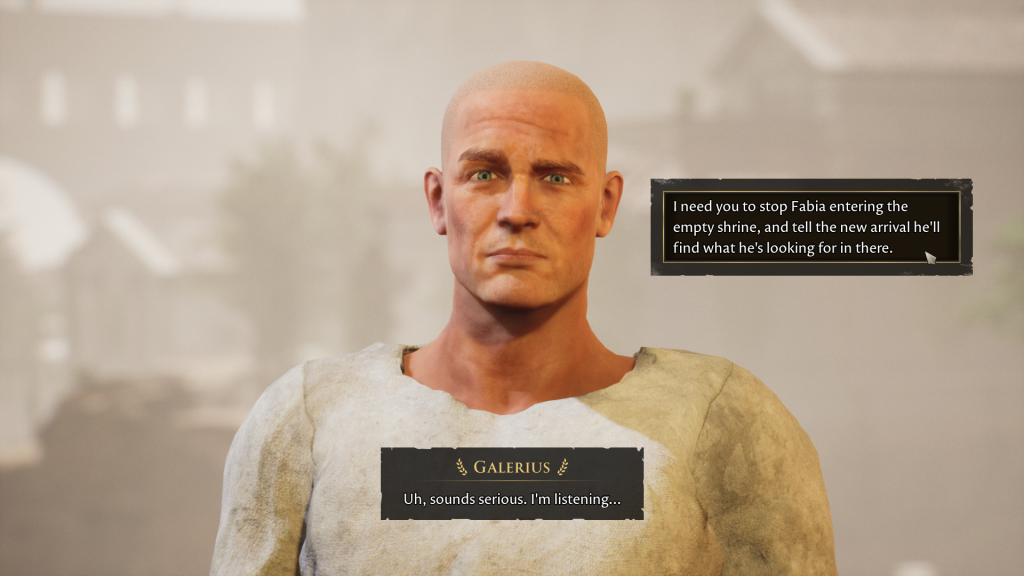
There’s enough wiggle room in The Forgotten City that I never lost my sense of agency; I didn’t feel like each run was prescribed. I was free to fuck up in whatever new way I’d just discovered. And each time I fucked up, I’d make a mental note to do something differently next run. At the same time, I don’t think the capacity for error is so high that these mental notes become difficult to manage. I also didn’t feel like the way the story played out was inevitable; my solving of the puzzle was contingent on challenging myself, remembering the clues, and figuring out what to do next. I guess that’s my roundabout way of acknowledging that the narrative isn’t necessarily linear. It’s not staring at the problem in front of you until you come to the same conclusion in the same way that everyone else is. You’re a part of the story, and The Forgotten City does a good job of making that feel real.
And in doing so, they’d be forgiven (I think) for keeping the game side of things a little light, for focusing more on dialog and puzzle solving than any action-adventure elements. And they do. The game’s combat isn’t intrusive, it’s not frustrating, but it’s not particularly strong, either. I can’t be too critical, though, because I enjoyed that unobtrusiveness. I didn’t load into this game to fight hordes of enemies, I started this journey to solve a sin mystery.
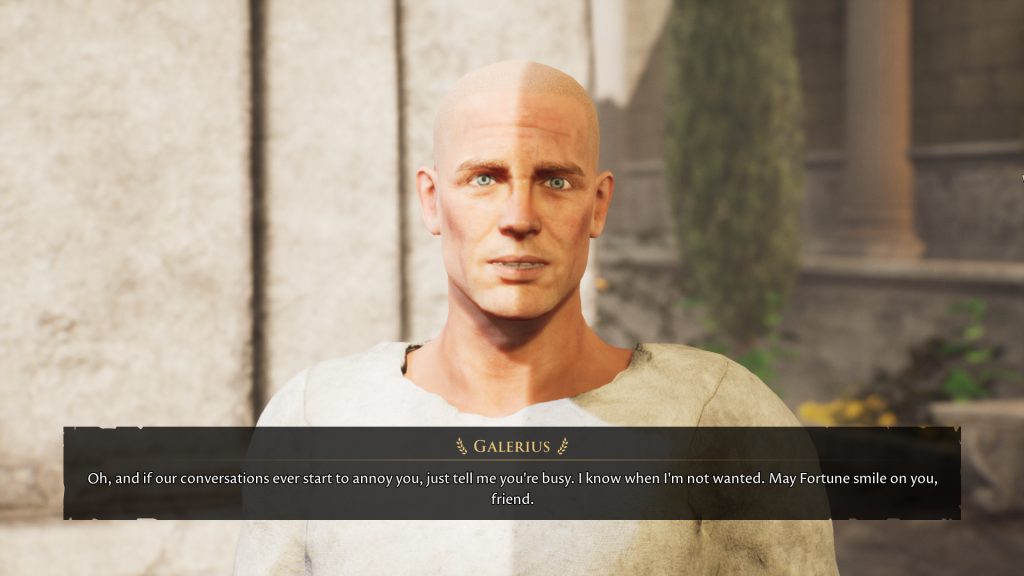
The bow combat is somewhat lackluster, but we’d be silly to cast aside the weapon for that reason alone. Its primary purpose, turning living material to solid gold, felt like a really unique way to interact with the world and gate certain story content. It meshes well with the latent narrative, evoking the myth of King Midas, and is clearly at-home in this world where it’s the weapon of choice of the statues deputized to punish the sinners and the sin-adjacent. In my playthrough, the golden bow was responsible for one of the game’s most rewarding “ohhh!” moments, those realizations known well to fans of Metroidvania games where sections of the game space are often clearly gated off but the mechanism to open the gate isn’t always clear. I remember scratching my head when I tried to interact with vines hanging from the walls of Maleolus’s locked villa; they weren’t strong enough to support me, the game whispered. Sure. But what would I have to do to change that? Lose weight? That didn’t seem realistic. Someone was about to sin, and unless that sin was ancient illegal limb removal surgery, I wouldn’t have time to get closer to my goal. Maybe I could shrink myself, like with a potion? But that sounded silly. It didn’t mesh with the game’s theme at all. The reveal of the golden bow was the sort of moment that would have never been obvious (at least to me), but seemed to fit perfectly with the game’s established lore and environment. It’s a simple mechanic, but it’s not one I expected to be introduced to, and I think it added to my enjoyment of the game.
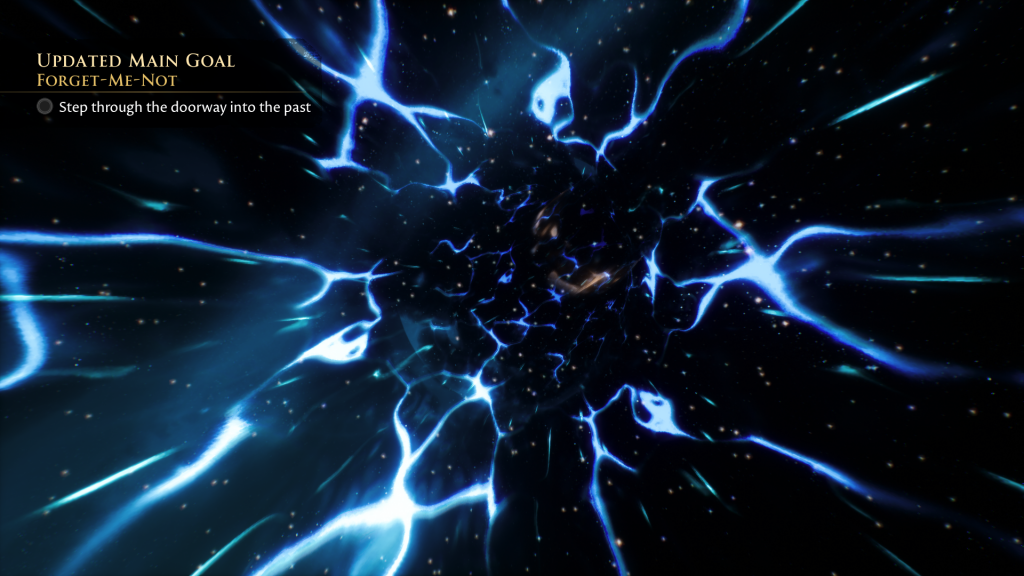
This is the part of the review where I usually include my last-minute appeal, a final, more concise recommendation of the game. But as long as you’re no foolhardy fiend, you’ve already played the game. In the off chance you’ve ignored guidelines set out for your own benefit: if you have any interest in unique narrative experiences in video games, The Forgotten City is absolutely worth a try.
Spoilers above!
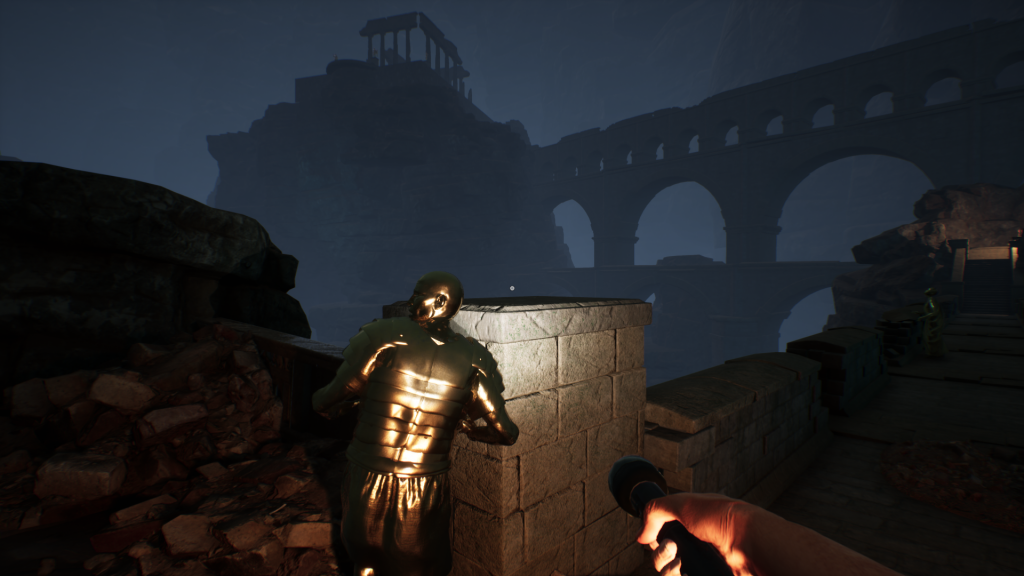
Quick Review
Game: The Forgotten City
Developer: Modern Storyteller
Published by: Dear Villagers
Available for: Windows PC, Playstation 4, Playstation 5, Xbox One, Xbox Series X
CONTENT
Microtransactions: None
Tedium: Minimal to none — Modern Storyteller’s tedium-retrieval squad worked hard on this one.
Violence: Limited — player-involved violence is nongraphic, but violent imagery and themes are depicted.
Content: Depictions of suicide, gruesome figures, implied torture, light sexual themes, philosophy
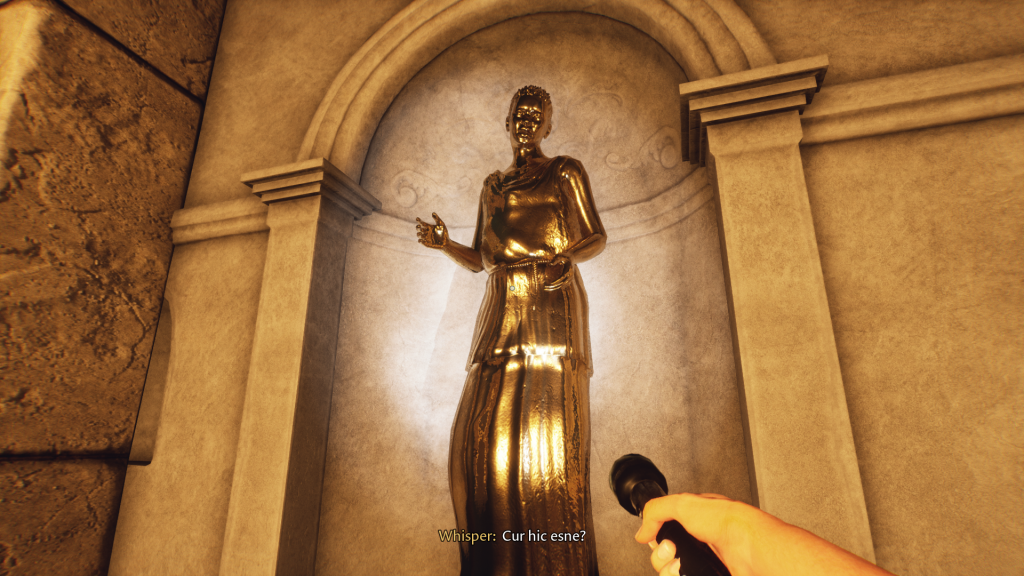
FEATURES
- Engrossing world and story
- Narrative puzzle solving
- Time loops
WHAT I LIKED
- The Narrative Experience — As a game and as a story both, The Forgotten City works really well. The puzzle is captivating and unraveling it is rewarding. Characters are interesting and make the world feel alive. History nerds won’t want to leave.
- The Time Loops — The best handling of a mechanic like this I’ve seen so far. Really interesting and really fun.
- It’s a pretty game — I’ve never taken so many screenshots I’m unable to share before.
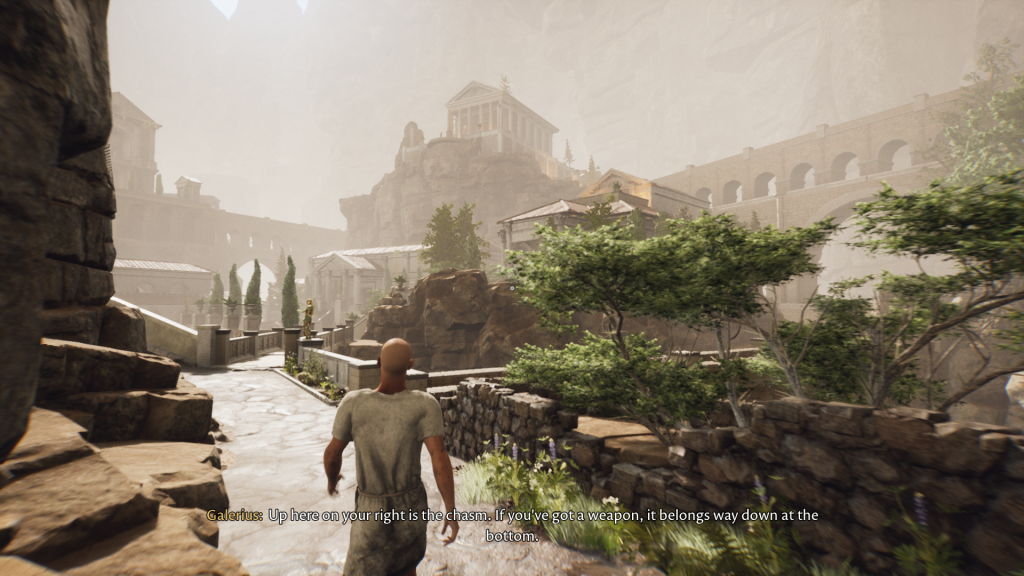
CONCERNS
- Short — According to HowLongToBeat, The Forgotten City‘s main story clocks in at 5 hours from beginning to end. I think it’s the perfect length for the story it wants to tell, and, having played it on Game Pass, I can find no reason to complain. For its non-sale asking price, though, reservations are understandable.
- More fantasy than history — Again, I’m struggling to find things to complain about, but for something with such a solid Roman aesthetic, it could be easy to misunderstand the setting. It’d be unfair, though, to fail to acknowledge the deep and clear attention to detail. Beneath the fantasy, the world does feel authentically Roman.
WHO’S IT FOR?
If you have any interest in unique narrative experiences in video games, or the idea of an experimental, story-based whodunnit (or, more accurately, whogonnadoit) clad in the colors of ancient Rome catches your eye, give The Forgotten City a shot. I really enjoyed it.
If you’re looking for something more action-focused, something longer than 5 hours, or you hate stories, this one’s probably not for you.
